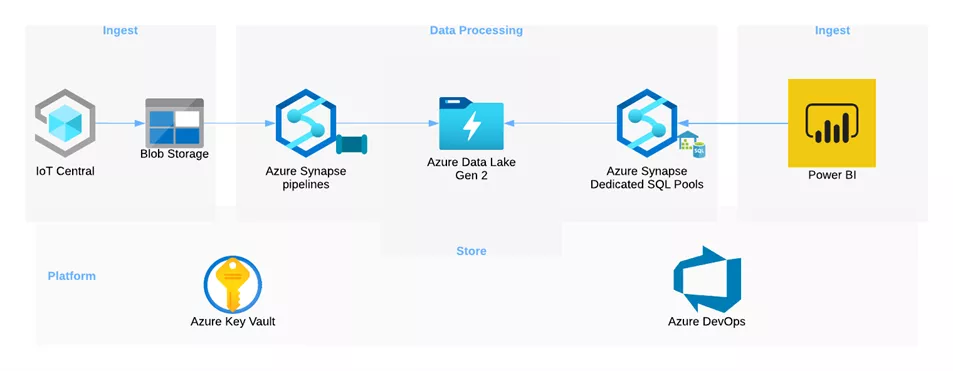Azure Synapse Overview

Earlier this year I joined the Azure Synapse Influencer Program. But I don’t receive payments as an influencer instead I get a wide range of benefits, such as early access to new features and capabilities, access to exclusive training and resources, and opportunities to engage with the Azure Synapse product team and also the occasional free swag like a coffee cup and sticker. I joined the program to build my knowledge around the platform and be able to show its value of it to my clients.
Azure Synapse is a cloud-based data integration and analytics platform from Microsoft. It combines enterprise data warehousing, big data integration, analytics, and business intelligence (BI) tools into a single, comprehensive platform.
One of the key features of Azure Synapse is its ability to handle large volumes of data with ease. It can process billions of rows per second, making it well-suited for organizations with high-volume data processing needs. Additionally, Azure Synapse allows users to connect to a wide range of data sources, including relational databases, unstructured data, and cloud services. This makes it easy for organizations to integrate data from multiple sources and gain a more complete view of their business.
Another key feature of Azure Synapse is its integration with other Azure services. This allows organizations to easily incorporate data from other Azure services such as Azure Cosmos DB and Azure Machine Learning, providing even more data sources to work with and expanding the capabilities of the platform.

Some common use cases include:
- Enterprise data warehousing: Azure Synapse can be used to store and manage large volumes of structured data, such as transactional data, customer information, and product data. This data can then be used for reporting, analysis, and decision-making.
- Big data integration: Azure Synapse can connect to a wide range of big data sources, such as Hadoop and Apache Spark, making it easy for organizations to integrate and analyze large datasets.
- Data integration and integration: Azure Synapse can be used to integrate data from multiple sources, such as relational databases, unstructured data, and cloud services. This allows organizations to gain a more complete view of their business and make data-driven decisions.
- Collaborative data analysis: Azure Synapse provides a rich set of tools for data visualization and analysis, making it easy for teams to work together and explore their data. This can help organizations make more informed decisions and drive business growth.
- Predictive analytics: Azure Synapse includes machine learning capabilities that can be used to predict future outcomes and trends based on historical data. This can help organizations identify new opportunities and make more accurate predictions about the future.
Azure Synapse includes support for continuous integration and continuous deployment (CI/CD) as part of its data integration and analytics platform. This allows organizations to automate and streamline the process of integrating and deploying data pipelines, ensuring that data is processed and made available in a timely and reliable manner.
CI/CD support in Azure Synapse is integrated with Azure DevOps and Github. This allows organizations to use familiar tools and processes to manage their data pipelines, making it easier for developers to work with data and collaborate on projects.
By using CI/CD in Azure Synapse, organizations can improve the reliability and consistency of their data pipelines, reducing the risk of errors and ensuring that data is processed and made available in a timely manner. This can help improve the accuracy and timeliness of data-driven decision-making and support the development of more effective and efficient data-driven processes. This can help improve the reliability and consistency of data pipelines and support more effective and efficient data-driven decision-making.
Overall, Azure Synapse is a powerful and flexible platform that can help organizations of all sizes manage and analyze their data. With its ability to handle large volumes of data, support a wide range of data sources, and focus on collaboration, Azure Synapse is a valuable addition to any organization’s data management and analytics stack. It does come at a cost that varies depending on the specific features and capabilities that an organization uses. Azure Synapse includes a range of pricing options, including per-second pricing for data integration and data management workloads, and capacity-based pricing for enterprise data warehousing workloads. The cheapest I’ve got my sandbox to operate at is $5 USD per month so far.
Below I’ve included some useful links to help you learn more about Azure Synapse:

